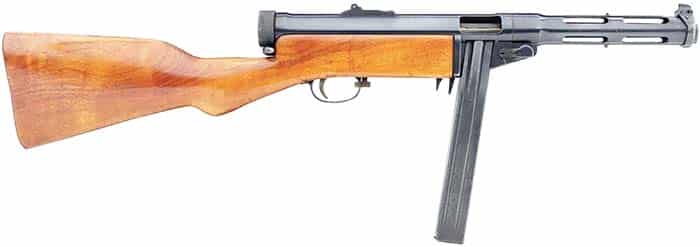By Michael Heidler
Since the German MP 18 had shown its potential in World War I, submachine guns became an indispensable part of the future military armament. This was also recognized in Sweden, and in 1935 the armed forces set out in search of a suitable weapon.
The Swedish army found what it was looking for in neighbouring Finland. There, Aimo Johannes Lahti had designed an outstanding submachine gun in 9x19mm caliber, which had made it into the armament of the Finnish army. Its official designation was “9.00 konepistooli M/31,” but it became known mainly as the “Suomi.” It was a very robust and almost indestructible weapon, very reliable and easy to handle. This was achieved, however, by a very complex production from high-quality materials, a high portion of manual work and an empty weight of 4.7kg (approx. 10.36lbs) respectively over 7kg (approx. 15.43lbs) with the 71-round drum attached.
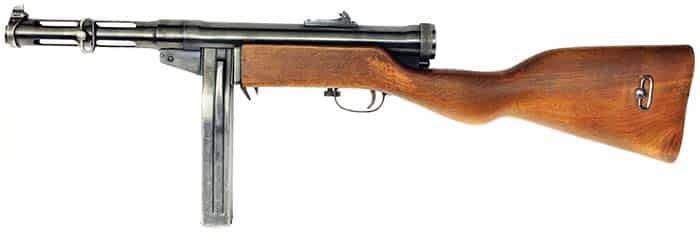
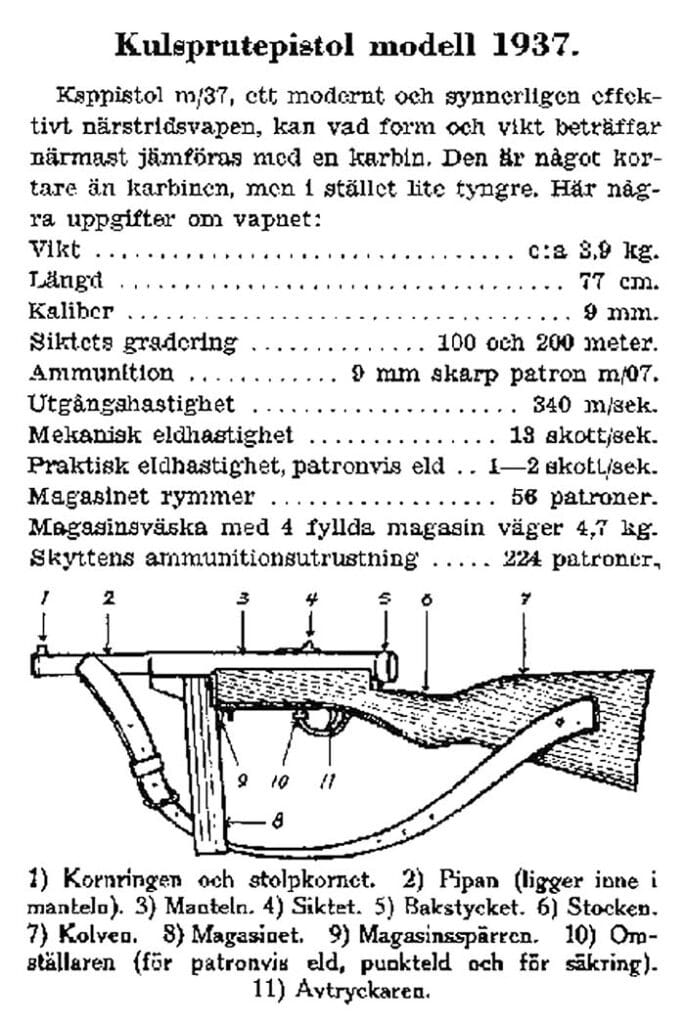
The bolt of the M/31, made of the best Swedish chrome nickel steel, was manufactured very precisely and sealed the tubular receiver almost hermetically during its movement. The reduced firing rate compared to earlier models was based on the resulting air compression and vacuum behind the bolt. The firing pin is interchangeable, but breakages happened rarely. The only weak point of the bolt assembly was the spring steel extractor. But the M/31 could even be fired without the extractor if necessary: the operator only had to hold it upside down so that the ejection port pointed downwards. The cocking handle at the rear of the receiver has no permanent connection to the bolt and does not move when shooting.
The Swedes were impressed by this submachine gun and after extensive testing they officially introduced the model in 1937 as the “Kulsprutepistol (Kpist) m/37.” However, Sweden was, for logistical reasons, afraid of adding a second type of cartridge to its ammunition stock and rather wanted to use its already adopted pistol cartridge 9x20mm Browning long (9 mm patr. m/07). Due to this decision, the Finnish manufacturer, Tikkakoski Oy, had to convert the new submachine gun. All ordered guns and magazines were produced especially for this caliber. The stick magazine with the nickname “coffin” had a capacity of 50 rounds; the Finnish drum magazine was never adopted by the Swedish armed forces.
The conversion was not done so easily. Due to the semi-rimmed cartridge case, they had to be placed one above the other in the magazine, but slightly offset in front of each other. Only in this arrangement could the uppermost cartridge slide smoothly over the following cartridge and be pushed into the chamber. The manufacturer designed a new magazine well that was slightly tilted backwards to match this fact. For Tikkakoski Oy, the production of this special model was quite costly and soon an agreement was reached with the Swedish government on a domestic license production by the Husqvarna Vapenfabriks AB.
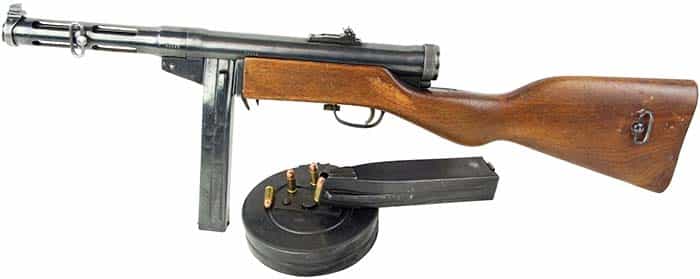
The Kpist m/37 also differed from the Finnish model in some other details: barrel jacket and barrel were shorter, the trigger guard was slightly enlarged, the cocking handle with knob-like ending was replaced by one with a hook and the wooden stock had a noticeably different design.
Two years after its introduction, the Swedish army owned just 900 pieces of the m/37. Political developments in Europe did not bode well and Sweden had to hurry up to meet its urgent need for submachine guns. The government came to an agreement with the German Reich and acquired 1,800 pieces of the Bergmann MP 35 (Swedish designation Kpist m/39), and at the same time 1,500 Walther pistols of the model HP (Swedish designation Pistol m/39). Carl Walther, in the German town Zella-Mehlis, also took over the production of the submachine guns for the Swedish contract. However, all these guns had one thing in common: the caliber 9x19mm. Now Sweden could no longer avoid the introduction of this caliber. The cartridge got the designation m/39.

In order to avoid complications in ammunition supply, Husqvarna also switched production to the new caliber, which gave the weapon the new designation m/37-39. The change can be seen in the now vertical magazine well at a 90-degree angle. The magazine capacity was reduced to only 50 rounds. The maximum sighting distance was extended from 200 to 300 meters by adding an additional rear sight blade.
Although Sweden itself had a large demand for submachine guns, it also supplied other countries such as Norway, Denmark, Indonesia and Egypt. On the other hand, at the same time, Sweden bought 500 of the early Suomi without muzzle brake from Finland and used them under the designation m/37-39F. American weapons also ended up in the hands of Swedish soldiers. In January 1940, the army bought 500 pieces of the Thompson 1928A without compensator (Swedish designation m/40). The tangent rear sight was calibrated in meters.
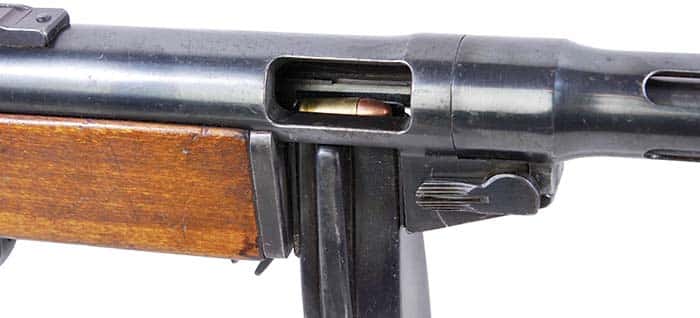
In 1943, the Swedish government began a military training program for selected Norwegian refugees. In coordination with the Norwegian government in exile in London, the secret project was run under the guise of police training. Numerous submachine guns m/37-39 and pistols m/40, without any manufacturer’s markings or other stamps, were used for armament. These submachine guns, designated “neutral” in the Husqvarna company records, were ordered by a company called Skandiastal AB (Scandinavian Steel), which was a front company for the Swedish secret service C-byrån (C bureau).
Total production of the m/37-39 at Husqvarna was approximately 35,000 pieces. The weapon was robust and reliable, but also complex and expensive to manufacture. The Swedes closely followed developments in other countries and, in 1943, it was decided to create a modern submachine gun by using as many stamped sheet metal parts as possible. This efforts finally resulted in the “Kulsprutepistol m/45” (Kpist m/45), which was introduced in autumn of 1945. The old m/37-39 became obsolete a few years later.
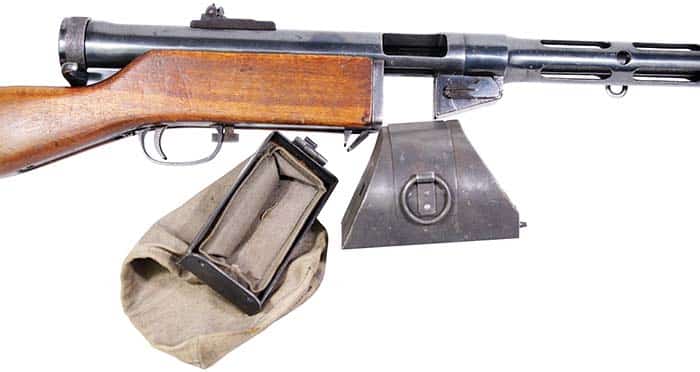
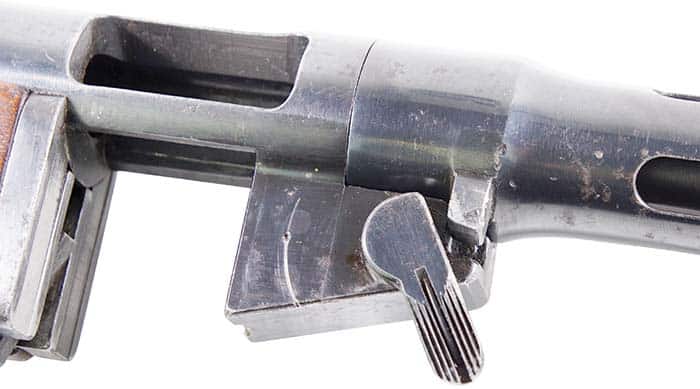
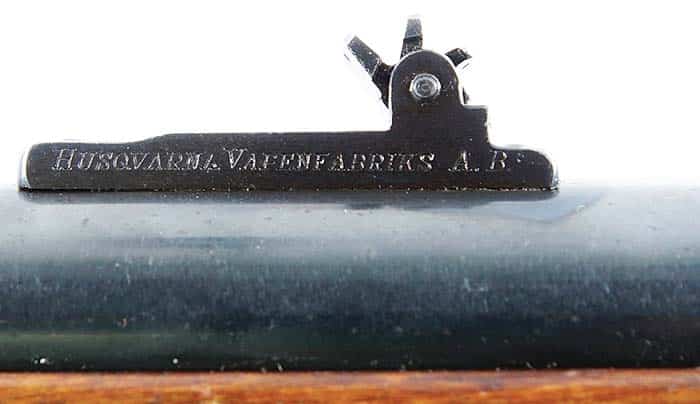
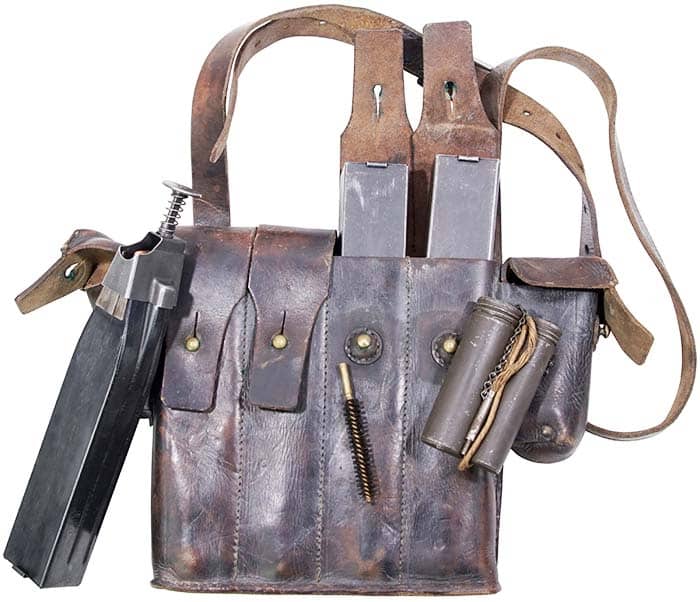
TECHNICAL DATA
- Caliber m/37: 9x20mm Browning Long
- Caliber m/37-39: 9x19mm
- Length: 770mm (30.3in)
- Length of Barrel: 213mm (8.4in)
- Weight (Empty): 3.9kg (8.6lbs)
- Weight (Loaded): 4.9kg (10.8lbs)
- Rate of Fire: 900 rounds/minute
- Sights m/37: 100 and 200m
- Sights m/37-39: 100, 200 and 300m
This article first appeared in Small Arms Review V25N5 (May 2021)



